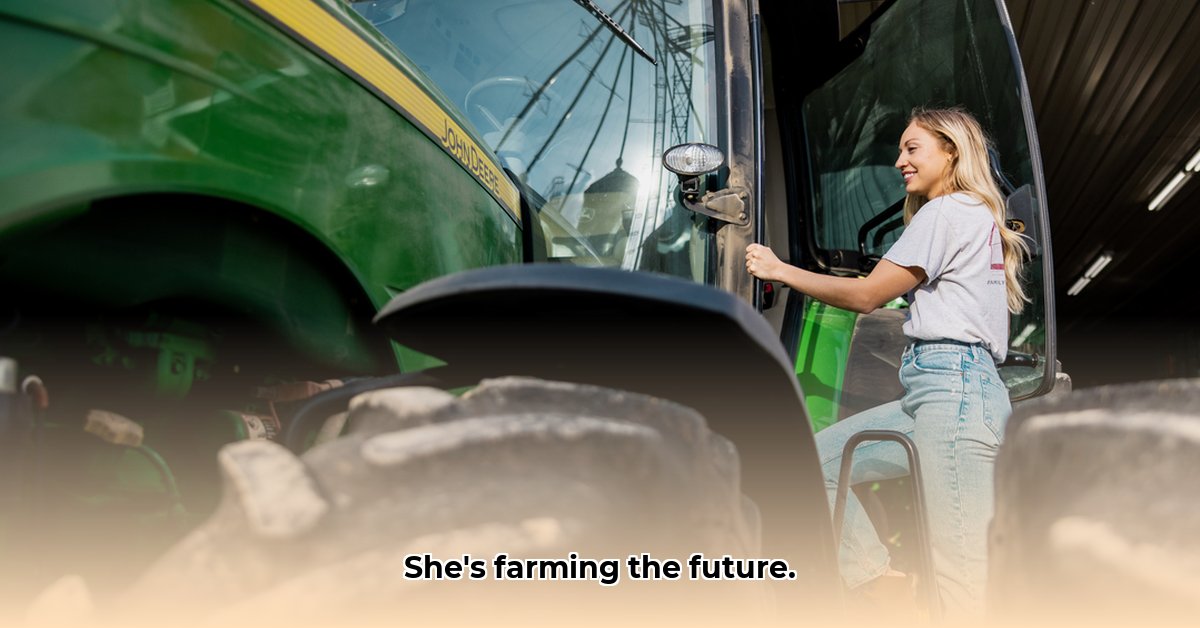
The "Tractor Girl" Phenomenon: More Than Just a Viral Trend
The internet, a constantly shifting landscape of trends and memes, unexpectedly gave rise to a powerful movement: #tractorgirl. These videos, showcasing women confidently operating agricultural machinery, weren't just a viral sensation; they represented a seismic shift in the perception and reality of women's roles in sustainable farming. More than just entertainment, these videos sparked crucial conversations about gender equality and the future of agriculture. The sheer volume of views and engagement highlighted a latent desire for increased representation and recognition of women's contributions to this vital sector. But what's the story beyond the likes and shares?
Technology's Transformative Role in Empowering Women
The rise of the "Tractor Girl" phenomenon is inextricably linked to technological advancements within the agricultural sector. Modern tractors are no longer the brute-force machines of the past. GPS-guided steering, automated controls, and ergonomic designs have significantly reduced the physical demands of operating heavy machinery, making farming more accessible to a wider range of individuals, including those previously excluded due to physical strength limitations. This technological shift is actively leveling the playing field. The tractors featured in many viral videos, often equipped with the latest advancements, clearly illustrate this point and offer a tangible example of how innovation can lead to increased participation.
Societal Shifts and Gender Equality: A Broader Context
The "Tractor Girl" videos didn't emerge in a vacuum. They reflect a broader societal movement towards gender equality, where women are increasingly entering and excelling in fields traditionally dominated by men. Agriculture, despite its long history, is no exception. The videos serve as potent visual representations of this ongoing struggle and triumph. But this shift is not merely anecdotal. It's a reflection of changing societal attitudes and a growing recognition of the immense contributions women can make to sustainable agriculture.
Challenges Facing Women in Agriculture: A Realistic Assessment
While the positive trend of increasing female participation is undeniable, it's essential to acknowledge the persistent challenges. Access to critical resources, including land ownership, financing, and adequate training, remains a significant barrier. Even with technological advancements, deeply rooted societal biases continue to hinder progress. Women frequently face skepticism and discrimination from lenders, colleagues, and even customers.
Challenges and Potential Solutions:
| Challenge | Impact | Solutions |
|---|---|---|
| Limited Access to Finance | Restricts business growth and expansion. | Government grants, microfinance initiatives, targeted investment programs for female farmers. |
| Gender Bias | Creates unequal opportunities and limits access to resources. | Anti-discrimination training, mentorship programs, legal reforms, and public awareness campaigns. |
| Inadequate Training | Results in lower productivity and safety risks. | Dedicated training programs, workshops, online resources, and apprenticeships tailored to women's needs. |
| Limited Access to Land | Restricts farm expansion and land ownership. | Land reform policies, support for women-owned cooperatives, and fair land distribution. |
Actionable Steps Towards a More Inclusive Future
Addressing the challenges requires a collaborative effort from various stakeholders. Here’s a concise plan for positive change:
For Aspiring Female Farmers:
- Short-Term: Seek apprenticeships, attend specialized training courses (e.g., agricultural mechanics, sustainable farming practices), and explore microfinance options. Network actively with established female farmers.
- Long-Term: Pursue leadership roles in agricultural organizations, develop robust business plans (including risk mitigation strategies), and advocate for policy changes promoting gender equality in agriculture.
For Agricultural Businesses:
- Short-Term: Implement inclusive hiring practices, provide user-friendly equipment and training, and foster a supportive and respectful work environment.
- Long-Term: Establish formal mentorship programs pairing experienced female farmers with newcomers, and promote equal pay and opportunities.
For Agricultural Educators:
- Short-Term: Integrate gender-sensitive content into agricultural curricula, highlighting successful female farmers as role models and emphasizing inclusive teaching methodologies.
- Long-Term: Conduct research to identify and mitigate existing barriers, advocate for policy reforms, and adapt curriculum to address specific challenges faced by women farmers.
For Governments and NGOs:
- Short-Term: Fund targeted training programs, provide access to microloans and grants, and actively implement and enforce gender-equitable policies.
- Long-Term: Ensure fair and equitable access to land and resources, support research on women’s contributions to sustainable agriculture, and launch impactful public awareness campaigns celebrating the achievements of women farmers.
Conclusion: A Sustainable Future Powered by Women
The "Tractor Girl" videos, while a seemingly simple internet phenomenon, represent a powerful inflection point. They've drawn attention to the increasing participation of women in agriculture and their crucial role in building a more sustainable future. By actively addressing the existing challenges and implementing the actionable steps outlined above, we can foster a truly inclusive agricultural sector, where women have equal opportunities to thrive and contribute their unique skills and perspectives to food security. The work is ongoing, but the potential reward – a more sustainable and equitable world – is immeasurable.